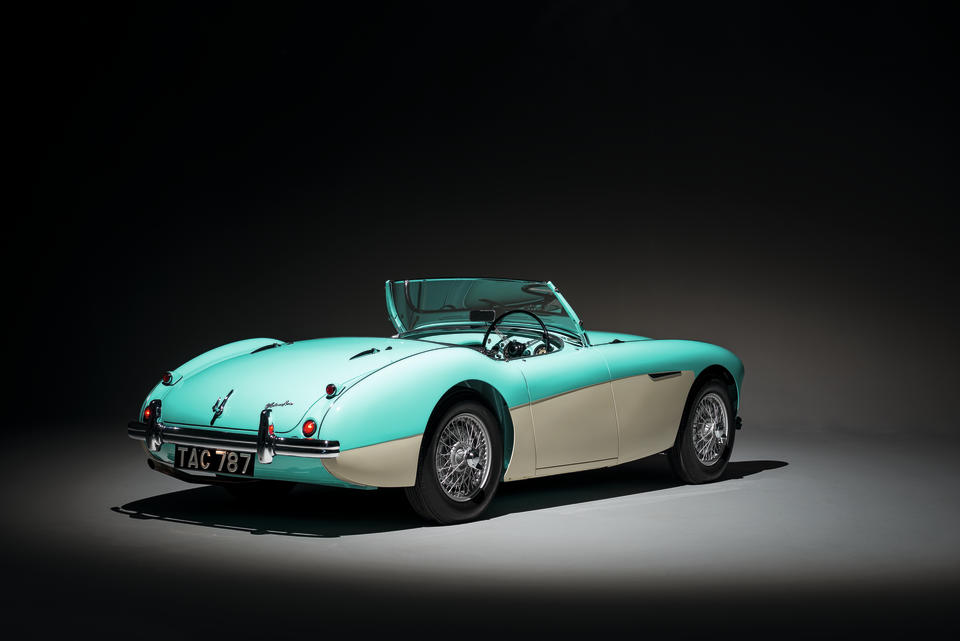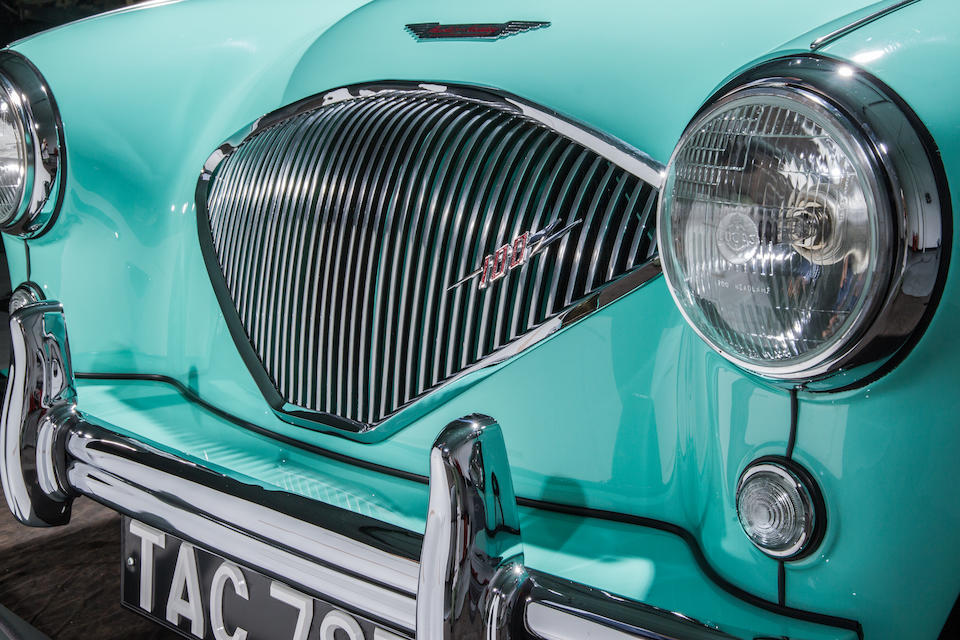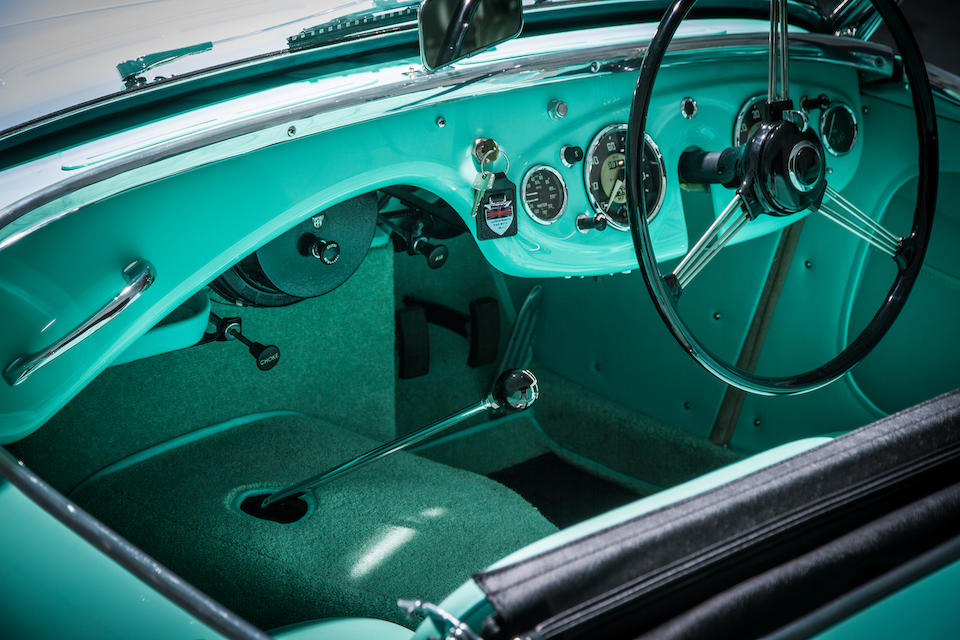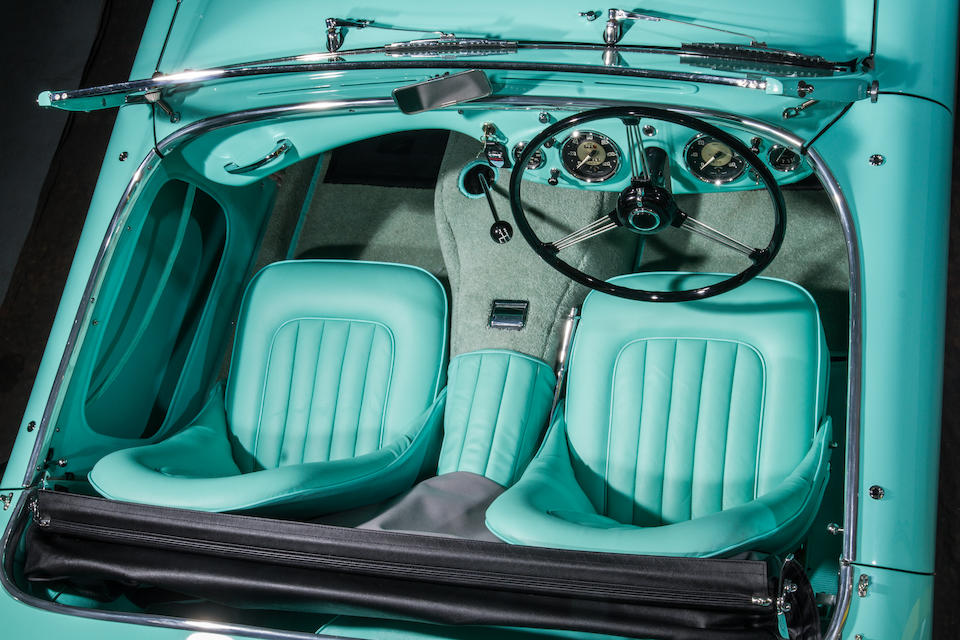History of the Austin Healeys
An Extract from Hagerty's
Buying Guide: Austin-Healey 100 and 3000
by John Simister 12 May 2021
For the full article click here:
The new breed began with the Austin-Healey 100, so named for its approximate top speed. Power came from Austin's largest four-cylinder engine, originally used in the immediately post-war Austin 16 and the company's first overhead-valve unit. Then of 2199cc and featuring a very long stroke, it was bored out to 2660cc for the somewhat unsuccessful Austin Atlantic. Its second home in the Healey proved rather more successful, and its 90bhp offered plenty of pace by 1950s standards given that the new sports car weighed under a tonne.
By production's end the view under the bonnet was very different: the Austin-Healey 3000, as the car had become, featured six cylinders in a 2912cc engine delivering 150bhp. Between these extremes came myriad small evolutions, which we shall now unravel in this buying guide.
That first Austin-Healey 100, internally designated BN1, has a curious gearbox arrangement. The gearbox itself is an Austin four-speeder, but first gear is blanked off (unnecessarily low) and an overdrive is added to work on second and top gears. Result: a five-speed transmission, which requires juggling of both a strange lever emerging from the left side of the tunnel and a switch to get all five in the right order. The BN1 also has a windscreen able to be laid back almost flat, to reduce wind resistance. You'll need sunglasses or goggles if you do this, unless you fancy scraping flies from your eyes.

Under the skin is a hefty chassis to which floorpans and the bulkhead are welded to make a semi-unitary structure. Suspension is standard 1950s fare, with coil springs and wishbones at the front and a leaf-sprung live axle at the back, its location helped by a Panhard rod. Dampers are old-fashioned lever-arms, and the similarly old-fashioned worm-and-peg steering box sits ahead of the front axle line – not great in a crash, especially as the long steering column isn't collapsible. Best not to think about that.
The front grille is a widened version of earlier Healey grilles, and cabin furnishings are minimal. Here is the Big Healey in its purest, most basic form. Two years on it became the BN2, with a normal four-speed gearbox (plus overdrive, usually) and an extra swage behind the rear wheel arches to delineate the colours in the newly-introduced two-tone options.
Some BN2s – 601 in all – were upgraded to 100M specification at the factory and some more were converted subsequently. The kit included larger carburettors (a pair of SU H6s instead of H4s) fed through a filterless air box, plus higher compression and a hotter camshaft, all topped by a louvred bonnet. Carrying out a similar conversion is popular today, because the extra 20bhp makes for a very fine-driving Healey.
A yet speedier evolution was the 100S, intended for racing, featuring a bumperless aluminium body with a pointed-oval grille that previewed that of later 3000s, plus disc brakes all round and a heavily-modified engine fitted with a new aluminium cylinder head. This had its porting moved to the opposite side, to allow separate instead of siamesed inlet ports and consequently much more power – 135bhp. Just 55 examples were made, five at Healey's Warwick competitions department, 50 at Longbridge, and most went to the US.
From 1956, the mainstream four-cylinder cars would be retrospectively and unofficially known as 100-4 because a new model had replaced them: the 100-6. Into its heavily revised chassis was placed BMC's 2639cc six-pot, first of a line later to be dubbed C-series, and that chassis also allowed fitment of tiny rear seats (BN4 model) although a two-seater (BN6) remained available. It must be said that the new engine added little in the way of pace, having a slightly smaller capacity than the outgoing four, weighing rather more and offering a lazy 102bhp. However, when production moved from Longbridge to Abingdon in late 1957, 100-6 modfications included a 15bhp power increase.
The 100-6 had a new face, too, with a pointed-oval grille spanned not vertically by straight slats but horizontally by wavy ones, an Austin design mark of the time. The bonnet now sported an air scoop, and the fold-flat windscreen had long gone. Next, in 1959, came a capacity hike to 2912cc, a power rise to 124bhp, front disc brakes and a new name: Austin-Healey 3000. Healey-watchers would note that the four-seater was coded BN7 (four-seater) and BT7 (rarer two-seater).
 1955 Austin-Healey 100 BN2 radiator grille
1955 Austin-Healey 100 BN2 radiator grille
Two years later, the 3000 MkII – still BN7 and BT7 – reverted to vertical grille slats in the pointed oval, and gained a trio of SU HS4 carburettors (and an extra 8bhp) instead of the previous pair of HD6s. Some way into production a new gearbox finally allowed the lever to emerge from the middle of the tunnel, and in 1962 the MkIIA (BJ7, and two-plus-two only) arrived with, at last, wind-up windows and an easily-folded hood. It also reverted to twin carburettors, now HS6s, with a reduction in claimed output of just 1bhp, making 131.
Finally, in 1963 came the MkIII or BJ8. It had bigger twin carbs (SU HD8), 148bhp, a luxurious-looking walnut-veneered dashboard, a fold-down rear seat and, from May 1964, some chassis changes to fix, rather belatedly, the perennial Big Healey problem of minimal rear ground clearance. The chassis rails were re-shaped, radius arms replaced the Panhard rod and the exhaust system was tucked up behind the adjacent sill.
And there, in 1967, it ended, after a career festooned with rally wins (Pat Moss in the 1960 Liège-Rome-Liège being a particular highlight) and a shelved plan to make a wide-bodied, Rover V8-powered version. At one point, BMC was considering replacing the 3000 with a re-grilled, Healey-badged MGC; after all, the smaller Sprite and Midget had long been the same car. We can be thankful that sense prevailed.
What's an Austin-Healey 100 and 3000 like to drive?
The popular view is of a growling six-cylinder bruiser, the 'hairy-chested sports car' that takes commitment and bravery to tame. The 100/6 and 3000 aren't really quite like that, though. Yes, the steering is heavy at low speeds, the ride can get choppy and the exhaust note is marvellous, but these are great mile-eating sports cars with lots of torque and an untemperamental nature. Later cars with wind-up windows and a better hood are surprisingly practical, too, and the MkIII with its wood and plushness is almost cosseting – especially in final form with softer rear springs and more spring travel.
All that said, in some ways the four-cylinder cars are more fun to drive. They are lighter, less nose-heavy, the engine is still muscular at low revs and the simplicity of their cabins has its own appeal. A Healey 100M, either original (expensive and rare) or recreated (popular and recommended) is one of the sharpest, keenest, most engaging sports cars of its era and plenty quick enough to hold its own on today's roads.
A very early Austin-Healey 100 BN1 has its own charms, too. Not only does the cranked-over gear lever offer only three forward ratios, its gate is reversed with first gear towards you and back. Drive a BN1, and you'll never forget you're in something unusual.
For the full article click here:





